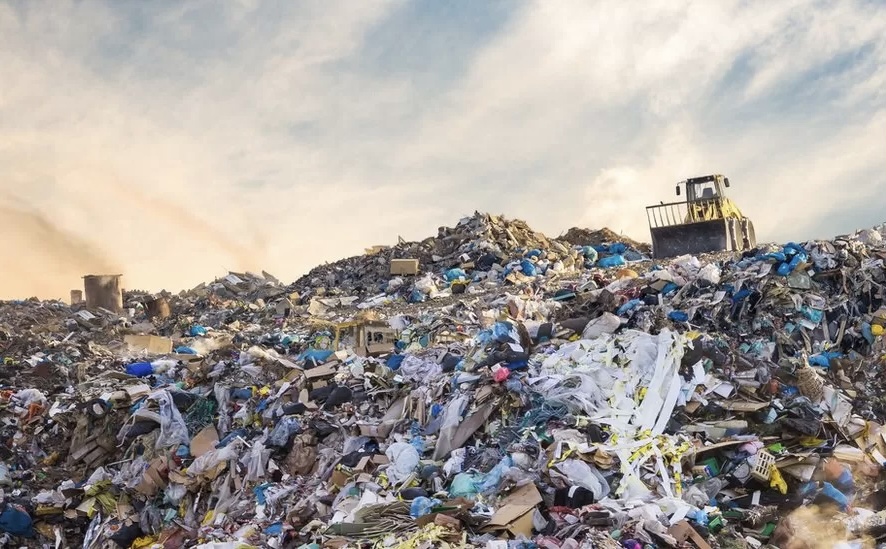Sew What?—The Rising Prevalence of Fast Fashion
Image by Vchalup, via StockPhoto
Around 16 million tons of textile waste are generated by Americans on a yearly basis, most of which ends up in landfills (U.S. Environmental Protection Agency).
March 25, 2023
Imagine, for a moment, that you’re an American living in the midst of the Second World War. Opting to stay in the homefront, you’re supporting the war effort by joining the hordes of men and women flocking to factories to meet the steadily rising demands of your army overseas. You and your peers are fueled with a newfound sense of patriotism and optimism as the tribulations of the Great Depression (which had immobilized the entire nation what seemed to be just moments ago) begin to melt away in the face of a blazing cause that will not only employ citizens from every corner of the country, but also reshape their everyday lives, both for better and for worse.
You have decided to work in a clothing factory where you help with the mass-production of the uniforms needed to supply 16 million military personnel. There’s a new emphasis on being faster, cheaper, and more efficient—an attitude that, unbeknownst to you, will persist beyond the scope of the war. The clothes manufacturing work you’re doing now will eventually spread to the far reaches of the globe not out of necessity, but as a response to growing consumer demands; you are effectively living through the origins of a business model where cheap labor and supplies are utilized to churn out clothes at an ever-increasing rate.

Today, this phenomenon, commonly known as “fast fashion,” manifests itself in the popularity amassed by large clothing retailers like Zara, H&M, Fashion Nova, and Shein. The digital age has allowed such companies to thrive more than ever before—with just a few clicks, consumers are able to spend hundreds, or even thousands of dollars on trendy, cheap clothes. Social media apps, namely TikTok and Instagram, have also propelled the speed at which the latest trends can be seen and accessed by the masses. At the heart of this system are celebrities and influencers who promote the proliferation of these products that consumers so eagerly buy. Retailers facilitate the connection between these two groups—the trendsetters and the followers—by rapidly producing replicas that look similar but lack the hefty price tag that comes with the original items.
“Clothing stores are always on standby. As soon as they see, like, Kim Kardashian wearing a new piece of clothing, then they’re in their factories, trying to replicate it and pump out as much as they can, as soon as they can before the trend’s over,” Kary Sin, a student with an interest in fashion design and styling said. “And these trend cycles only really last a few months—maybe even less than that.”
Even in the scope of South High School, the effects of these cycles have been glaringly obvious. Just look among the bustle of students moving class-to-class between periods—chances are that you’ll spot at least a few wearing clothes that will inevitably fade into irrelevance within a year, if not less. “Some people in this school are always dressed up—it’s like they have a new outfit every week,” an anonymous student said. “And even for the people who don’t go to those extremes, you can tell that many of them are still trend followers.”
Many attest to the significant contributions of social media as well, especially in relation to the pressures they may feel to dress a certain way. “Seeing most people following trends and dressing in a certain way, I sometimes feel the need to do the same so I won’t be left out,” said Yuzhen Lin, who shops from fast fashion brands around once a month. Megan Chan, another frequent consumer, expressed a similar sentiment, attributing her own feelings to the one-dimensionality that social media seems to push: “Clothes and style are one of the prominent elements someone initially judges you by. My [Instagram] feed is full of well-dressed people, and it makes me feel as if I should dress like that too to fit in.”
Although a seemingly volatile business, fashion companies can use the quick trend cycles to their advantage. Products are sold in relatively small quantities with the capacity for surplus manufacturing on hand if needed, allowing them to churn out new products and make adjustments to existing ones at a rapid pace. Cheap, usually synthetic fabrics are used to cut down costs, and labor is extracted from developing countries for the same reason.
The low price points give people—especially students with no active income—even more reason to buy from these companies. Chan explained, “I don’t have much money to spend on clothes; it’s more practical to buy many cheaper items from a fast fashion brand than only one expensive one elsewhere.
“I wish I wouldn’t feed into fast fashion brands and feel awful when I do, but it’s also hard to avoid in a world all about money and getting the cheapest prices and deals.”
Some students also brought up the issue of the environment when it comes to overconsumption. “Considering how rapidly fast fashion has taken hold of consumer culture in the past decades, I think there’s a huge issue around its environmental consequences,” Annie Yao, a sophomore environmental activist, and long-standing staff member of AREA-C (The Animal Rescue and Environmental Action Club) said. “As long as people continue to buy fast fashion in bulk when there are other resources available, it only encourages the industry to further harm the earth. It’s definitely tempting to see all the shiny signs and brand deals, but is it really worth the deterioration of our planet?”
What was originally an all-American effort for glory and victory has since transformed into a worldwide operation, not for the purpose of furthering a war cause but to satisfy growing consumerist demands. With the direction that it’s currently taking, fast fashion may be here to stay for a while, and not without bringing potentially irreversible effects. All the same, each individual has the capacity to improve themself—perhaps by taking the advice of Meghan Lou, a student who prefers raiding their parents’ closet over buying brand new clothes: “Don’t let [social media] make your decisions for you—dress how you want to dress.”








